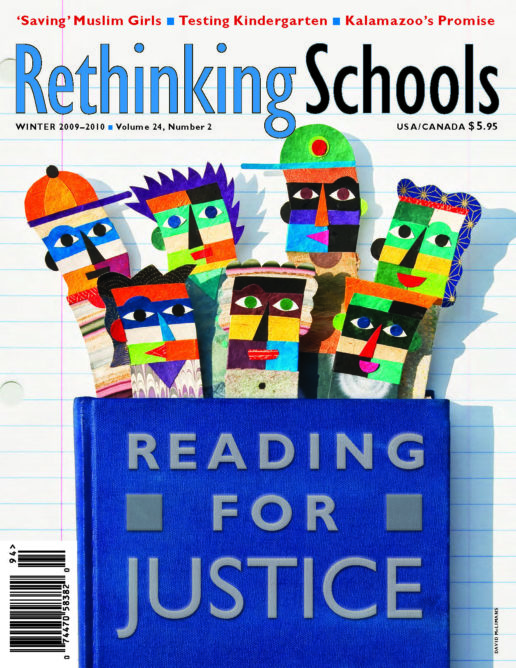Preview of Article:
Testing Kindergarten
Illustrator: Randall Enos
I remember my kindergarten experience from 25 years ago. Way back then, kindergarten focused on letters, sounds, counting, coloring inside the lines, cutting straight along the solid black line, and learning how to get along with others. I remember looking forward to rest time, recess, snack, and show and tell. That was kindergarten before the days of No Child Left Behind. Kindergarten post-No Child Left Behind is being turned into a school experience that results in many children disliking school and feeling like failures.
I have spent the last six years teaching 5-year-old kindergarten for Milwaukee Public Schools (MPS) in Milwaukee, Wis. During this time, I have seen a decrease in district initiatives that are developmentally appropriate, and an increase in the amount of testing and data collection for 5-year-olds. Just when I thought the district couldn’t ask for any more test scores or drills or practice, a new initiative and data system pops up for my school to complete. My school has not met our Adequate Yearly Progress (AYP) for the past three years. Due to our failure to meet AYP, we are now a School Identified for Improvement (SIFI), with Level Two status.
The students in my classroom during the 2008-09 school year completed more assessments than during any of my prior years of teaching kindergarten:
- Milwaukee Public Schools’ 5-Year-Old Kindergarten Assessment (completed three times a year)
- On the Mark Reading Verification Assessment (completed three times a year)
- A monthly writing prompt focused on different strands of the Six Traits of Writing
- 28 assessments measuring key early reading and spelling skills
- Chapter pre- and post-tests for all nine math chapters completed
- Three additional assessments for each math chapter completed
- A monthly math prompt
- Four Classroom Assessments Based on Standards (CABS) per social studies chapter (20 total)
- Four CABS assessments per science chapter (20 total)
- Four CABS assessments per health chapter (20 total)

